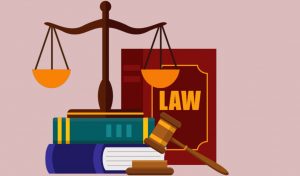Historical development of Nigerian Constitution: Apparently, the geographical entity called Nigeria is a British imperial creation. Originally, there was no territory called Nigeria, but by treaties, conquest and sufferance, the British acquired control over the different territories which make up Nigeria today. These territories can be divided into 3 main groups namely:
- Lagos and the neighboring Yoruba land I.e the Bight of Benin.
- The Lower Niger Basin and Surrounding territories known as Bright of Biafra or the Oil Rivers.
- The Northern kingdom or Emirate and the neighboring middle belt territories.
In this article, i will trace the development of the constitution of Nigeria from 1914 (the first constitution of Nigeria by Lord Lugard) till 1963 (republican constitution). As a citizen of Nigeria, anything that has to do with the constitution of Nigeria should be your concern because the constitution is the supreme law of the land. Thus, it is very important to know how the constitution of this country has developed from 1914 till the current 1999 constitution. I enjoin you to read this article till the end. Trust me; you will learn a lot from this content.

Must read:
- Examination malpractice In Nigeria
- Pillars of democracy in Nigeria
- Importance of Separation of powers in Nigeria
- Best and most prominent lawyers in Nigeria
- See the Highest paying law firms in Nigeria HERE
Seven (7) Historical Nigerian Constitutional Developments
- The 1914 Constitution or Lugard’s constitution
- The 1922 Constitution or Clifford’s constitution
- The 1946 Constitution or Arthur Richard’s Constitution
- The 1951 Constitution or Macpherson Constitution
- The 1954 Constitution or Lyttleton’s constitution
- The 1960 Independence Constitution
- The 1963 Republican Constitution
Above are the constitutions that I will be discussing extensively in this article. To read detailed information about the constitutions mentioned above and their features, join me as I buttress on them one after the other. Here we go!
1. The 1914 Constitution or Lugard’s constitution:
The 1914 Constitution or Lugard’s constitution is the first constitution in the development of Nigerian Constitution. It was established after the Northern and Southern Nigeria were amalgamated and Sir Lugard was appointed the Governor General of the United Nigeria. The Governor General established a legislative council known as the Nigerian council and its major function was to secure and encourage the expression of public opinion from all part of the United Nigeria on administrative matters.
Membership of the council was to be drawn from all parts of the Nigeria. Traditional rulers were nominated to represent the native inhabitants. The council was composed of 30 members.
The constitution of Nigerian council ensured that it made the least practical input in the formation of official policy. It was required to meet not less than once in each calendar year. The Governor who was its president was to have an original or a casting vote and decision were to be made by the votes of the majority.
Even so, resolutions passed by the council may not have legislative or executive authority except the Governor, thought it fit and gave effect to such resolutions. The Nigerian council was therefore a purely deliberative and advisory organ which didn’t partake in legislating for any part of Nigeria.
More so, an elective council was established for the whole country. The council consisted of the Governor and 10 other officials. The council met only when summoned by the Governor and the quorum for the meeting was two.
The Function of the council was to advise the Governor when it’s advice was sought. The Governor was not bound by the advise of the council and when he reject the council’s advice he must report his decision to the Secretary of the state stating reasons for doing so.
Also read:
- See the characteristics of fundamental human rights in Nigeria
- Top reasons for military intervention in Nigerian politics
- Reasons why women don’t engage in politics
- Characteristic of customary law in Nigeria
- How to create a blog and make money in school
2. The 1922 Constitution or Clifford’s constitution:
The constitution of 1914 continued in existence with minor amendment until it was introduced. Sir. Clifford who was the architect of the constitution was the Governor. Under this constitution a legislative council was set up but its jurisdiction was limited to the colony of Lagos and the Southern province of the protectorate.
It did not legislate for the Northern province except that it’s sanction was necessary for all expenditure out of the funds from revenue of Nigeria in respect of these province. In other words neither the advice of the council nor its consent was required for legislation relating to Northern province.
The Governor alone was empowered to make laws for the Northern province by promulgation. A possible reason for the exclusion of the Northern provinces from the jurisdiction of the legislative council could be that they were in effect self contained states. That is, the defacto government provided by the native administration.
Secondly the Emirs were used to the Governor legislating for them and so they would not take kindly to the transfer of that responsibility to any legislative council sitting in Lagos even if they were represented on it. In any case they were not in the position to take an active part in the debate in the council. The membership of the legislative council was 46 and was made up of the following; the Governor as president, 26 official members, 4 representative members and 15 nominated unofficial members.
One of the significance of the legislative council was that the powers to make laws for areas under its jurisdiction become vested on the Governor acting this time not on his discretion but within the advice and concent of the council. The council therefore became the law making authority in the area.
It must however be pointed out that the establishment of the legislative council as the legislature of the area under its jurisdiction,did not in any way, diminish the subordination of the government of Nigeria to the imperial government. The reason was because, the Governor was required to legislate only with consent of the council yet this consent was mere formality because all the various legislative councils that functioned in the country up to 1922 were composed predominantly of officials appointed by the Governor and were therefore to vote as directed by him.

3. The 1946 constitution or Arthur Richard’s Constitution:
The second phase in the historical constitutional development of Nigeria was characterized by slight relaxation in imperial control introduced by the Richard’s Constitution of 1946 which came into force on 1st January 1947.
Clifford’s constitution was in operation for 24 years. Richard’s constitution replaced this. Although the 1946 constitution got its name from Arthur Richard the Governor, it was conceived by Governor Bourdillon. Arthur Richard improved on it and introduced it as the constitution of 1946.
Another important factor of the 1914, 1922 and 1946 constitution of Nigeria was that, they were framed by the Governor, the people of Nigeria were never consulted before it was framed and promulgated. Under the 1946 constitution a new legislative council having authority and power over the whole of Nigeria including Northern Nigeria was set up.
Legislation for the whole country was now by the Governor with the advice and consent of the legislative council. This consent was no longer a matter of formality as there was now in the council an unofficial majority. The council was composed of:
- The Governor
- 16 officials made up of 13 ex-officio members and 3 nominated officials.
- 24 unofficials made up of 24 nominated and 4 elected members.
One significant feature of the 1946 constitution was that it makes the end of official majority in the legislature because under this constitution, for the first time in the history of the country, unofficials out numbered officials.
More so, for the first time, the Northern province were brought within the legislative authority of this newly created Nigerian legislative council. Indeed for the first time, Northern leaders sat with leaders of the other parts of the country and participated in the discussion of the political affairs of their country.
It should be noted that under the Richard’s constitution for the first time the term provinces were replaced by the term Regions. Thus, Richard constitution introduced, for the first time, the concept of regionalism which had no precedent anywhere in Africa. The constitution equally established a regional council in each region.
The Northerners had the House to chiefs and the House of Assembly. The Western and Eastern regions were composed of a single House of Assembly. Thus, only the North had an upper chamber thereby emphasizing the importance attached to the Northern Chiefs and Emirs.
Although Richard’s constitution introduced regional assemblies and conferred upon them certain political and deliberative power, it could not be said to have introduced any principles of federalism. It could however be said that the constitution pointed towards that direction.
Lastly, an executive council was created for the whole country. The executive council was not different from the one established under the 1922 constitution both in its composition or in its relationship with the Governor except that in 1949.
4. The 1951 Constitution of Macpherson Constitution
Richard’s Constitution was meant for at least, 9 (nine) years. However, Macpherson, the then Governor noticed the wish of Nigerian people to make constitutional changes soon. A selected committee was set up. It recommended that the widest spectrum of public opinion should be consulted at every level of the society.
Accordingly, consultations stated from village and district levels on to provincial and divisional conferences and then at the regional conference levels. Conferences were also held in the Lagos colony.
A drafting committee was also set up whose function was to consider the views of the various conferences and submit a draft constitution for a re-consideration in a general conference comprising all Nigerian members of the legislative council together with representatives of regional and colony conferences.
The task of the general conference was to examine the recommendation of the drafting committee and submit its proposal for deliberation in the regional houses and legislative council. The final document was then submitted to the Governor and Secretary of state for the colony for final approval.
The result of all these was the Macpherson Constitution of 1951. As can be seen from above, the Nigerian people were given full opportunity to express their opinions on the kind of constitution they wanted. The new constitution represented a major advance from the Pre-existing constitutional position because it introduced elected majorities in the central legislature and regional House of Assembly which were now endowed with independent legislative power within certain defined fields.
It is important to note that though the legislatures of this constitution were represented in nature, the Governor in the center and the Lieutenant Governor in the Regions still remained a vital part of the legislative process. This was because the Governor or Lieutenant Governor still retained his power of certification and the power of reservation towards bills passed by the Houses of Assembly.
For example the Governor and Lieutenant Governor must comply with the royal instruction which provided that any bill for a law to determine or regulate the privileges, immunities or powers of the legislative house must be reserved for the signification of the Crown’s pleasure.

ALSO READ:
- Less competitive Universities in Nigeria that gives admission easily
- Best science courses to study in the university
- Best time to study and understand effectively
5. The 1954 Constitution of Lyttleton’s constitution
The 1951 Constitution operated for only 3 years before it was revoked. One of the main reasons that caused it collapse was a major crisis which occurred in the House of Representatives on the 1st of April 1953. An Action Group back bencher, Chief Enahoro tabled a motion calling the House to accept as a primary political Objective, the attainment of self government for Nigeria in 1956.
The feeling of the elected members from the Northern Region was that this motion was directed against them, designed to expose them to public ridicule and bring them to public contempt as stooges of the British government since they could not support a motion for self government in three years after 1953.
The clear intention of Chief Enahoro was to embrace all those who felt the timing was inappropriate, hence he threatened that the vote at the end of the debate would show who were the true nationalists. The Northern representatives did not loose sight of the implication of all these and so the late Saraduna of Sokoto leader of NPC moved an amendment to the motion substituting the words “as soon as practicable”.
There was a recess and when the house resumed its sitting, a northern member moved motion for adjournment. The AG and NCNC members in the house felt that they could no longer put up with the attempt to postpone a vote on the substantive motion and so decided to walk out of the house. Afterwards, both the AG and NCNC geared up their party machineries and newspapers for a country wide campaign to discredit the Northerners as traitors and agent of British Imperialists.
Consequently, the relationship between the North and the South was strained and indeed the unit of Nigeria threatened. On 21st of May 1953 the Secretary of state for the colonies announced in the House of Commons that the recent events in Nigeria have shown that it was not possible for the country to be governed on a system of government for the country. This therefore meant that the federal and regional legislatures would have separate legislative competence.
Following this, Nigerian leaders were therefore invited to London for a conference for Nigeria’s next constitution. This conference took place between 30th July 1953 and 22nd August 1953 with Lyttleton as the Chairman. It was followed by another constitutional conference in Lagos on the 19th of January 1954. In these two conferences, the structure frame work of the 1954 constitution based upon the principles of federalism and other related matters were debated and agreed upon. Accordingly, a new revised constitution based on federal principles known as Lyttleton’s constitution came into force on October 1954.
Under this constitution, 4 major constituent units were established for the whole country. That is, the federal capital territory and 3 Regions, Southern Cameron was detached from Eastern Region and made a separate state and the colony of Lagos was detached from the Western Region to form the federal capital territory.
A significant feature of the 1954 constitution was the attainment of internal self government by the Eastern and Western Regions in 1957. With the attainment of this internal self government it therefore meant that the regional government had exclusive control over all matters within the legislative authority of the Region provided that this will not in any way impede or prejudice the exercise of the functions of the Federal Government. Northern region was also granted internal self government in 1959.

6. The 1960 independence constitution:
Nigeria became completely independent of British in 1960 by virtue of the Nigeria Independence Act 1960 which was enacted by the British Parliament. With this Act certain important changes were introduced into Nigerian Constitutional history. The Act stated that the affixed date for the country’s independence was 1st October, 1960 and that as from that date it will become “part of Her Majesty’s dominions under the name of Nigeria”.
The Act also provided that no Act passed by the British Parliament after 1st of October 1960 will be regarded as part of Nigeria’s law. The Act also stipulated that as from 1st of October 1960 any person who immediately before the said date is a citizen of the United Kingdom and colonies shall on that day cease to be such a citizen if:
- Under the law of Nigeria be became on that day a citizen of Nigeria.
- He, his father or his father’s father was born in any of the territories comprised in Nigeria.
But one did not cease to be a citizen of United Kingdom if his father was born in the United Kingdom or in a colony or he was naturalized in the United Kingdom and colonies or become a British subject by virtue of the annexation of any territory included in a colony. A wife of a citizen of the United Kingdom and colonies would not be denied citizenship unless his husband was no longer a citizen.
More so, the regional and federal legislatures shall have power to make laws having extra-territorial operation, so far as those laws relate to matters within the legislative competence of that legislature.

Thus, by Nigeria’s independence, the relationship between Nigerian and the British government was redefined. The Power of British parliament to legislate for Nigeria was terminated and the responsibility of the British government for the administration of Nigeria ceased.
It is also important to note that the independence constitution didn’t alter the relationship between Nigeria and the queen in her personal capacity. Thus the queen was still queen of Nigeria and internally the government was still Her Majesty’s government in spite of the independence.
7. The 1963 Republican Constitution:
The 1963 Republican Constitution is the last constitution we will be looking at in the historical development of Nigerian Constitution. First, it is evident that the 1960 Independence Constitution primarily altered the relationship between Nigeria and the British government.
Thus, by that Constitution the British Parliament could no longer make laws for the contrary and also the responsibility of the British minister to advise the queen with respect to the exercise of her jurisdiction in the country was withdrawn. But the independence constitution didn’t alter the relationship between the country and the Queen in her personal capacity.
Thus, inspire of this constitution the queen was still the Queen of Nigeria and internally the government was still Her Majesty’s Government. By the Constitution, the Sovereignty of Independent Nigeria which was formally vested in the Queen was to be exercised in the following ways;
- The Sovereignty of Nigeria was divided between three regional governments and a federal government.
- The Queen being an absent Sovereignty was represented by the Governor-General in the Centre by the Governors in the Regions. Thus, the Queen’s constitutional functions with respect to law making were directly vested on the Governor-General and Governors.
- The Executive authority of the country was vested in the Queen alone as the Head of State. Thus, within the country, the government together with its institutions belonged to Her Majesty and was carried on in her name.
The situation was intolerable for the international image of a big country like Nigeria. As a result a new constitution to give Nigeria a republican status to back her subjection to the Queen was propagated.
In 1st October 1963, the third anniversary of Nigeria’s independence, the 1960 constitution was revoked and replaced by the 1963 constitution. By this revocation the Queen ceased to be the Queen of Nigeria. Thus, all the Constitutional functions of the Queen with respect to law making were withdrawn and vested in the president, Governor and the legislative Houses, and the executive authority of the Federation became vested in the president and that of the Region in the the Regional Governor.
The preamble of the constitution stipulates that:
“Having firmly resolved to establish the Federal Republic of Nigeria, we the people of Nigeria, by our representatives here in parliament assembled, do hereby declare, enact and give to ourselves the following constitution”
This simply shows that the constitution was autochthonous in character. It emphasized that the constitution was no longer an order in council of the Queen but an indigenous instrument of government drafted by Nigerians in the Nigerian government.

MUST READ:
- How to answer law problem questions using IRAC method
- Most populated Universities in Nigeria 2024
- Sources of Nigerian Law: Everything you need to know
- Richest lawyers in Ghana 2024
Conclusion:
From what we have discussed so far, I believe that you can confidently trace the development of the constitution of Nigeria from 1914 till 1963. Note that each of the constitutions discussed in this article contributed greatly to the drafting of the current 1999 constitution of Nigeria. This is another reason why you should know the historically Constitutional development of Nigeria. Basically, you should know how all the constitutions Nigeria had before and after independence contributed to the content of the current constitution of Nigeria.
Hope this was helpful? If you still have any question or contribution to make on this topic, kindly send your comments via the comment box. I will be glad to hear from you!

Edeh Samuel Chukwuemeka, ACMC, is a lawyer and a certified mediator/conciliator in Nigeria. He is also a developer with knowledge in various programming languages. Samuel is determined to leverage his skills in technology, SEO, and legal practice to revolutionize the legal profession worldwide by creating web and mobile applications that simplify legal research. Sam is also passionate about educating and providing valuable information to people.
Great write up. I was expecting to see the other constitutions we had after 1963. It will be good to complete this article up to the latest constitution including the amendments. Great job!
It’s well written , I was expecting to see the other constitutions we had after 1963. It will be good to complete this article up to the latest constitution including the amendments. Thanks
Best of all
Best of all,websites
From 1963 is it the constitution that they use till 1999
Yes